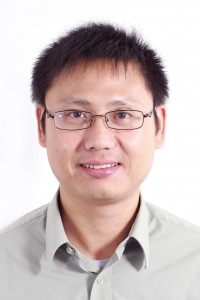
DR: Dr. Ruan, thank you for doing this interview. Could you please give us some background information about yourself and how you got to where you are now?
MR: I received a Ph.D. in Kinesiology from Louisiana State University in 2007. I also earned a Master’s degree in Sports Biomechanics from Shanghai University of Sport in 1998. I am currently a faculty member at Ningbo University, China. I have worked for a sporting goods company in China, a sports research institute in China, a sports medicine institute, and a university in the U.S. I also participated in a high performance biomechanical analysis projects for elite athletes sponsored by the U.S. Track and Field team.
DR: I heard your talk at the Central Virginia Sports Performance Seminar. You talked extensively about the differences between the Chinese and American sports systems. What are some of these differences?
MR: There are many differences. I would like to talk about three major differences between the Chinese and American sports systems: goal, administrative system, and funding system. The goal of the Chinese sports system is to win Olympic medals. We also can call the Chinese sports system an Olympic medal- oriented system. The whole system was built for winning more Olympic medals. On the other hand, the American sports system is a market-oriented system. I can’t say money is the only goal of the American sports system, but it definitely is not Olympic medals. The Chinese sports system is also a centralized national system; in other words, it is controlled and operated by the government. Although there are soccer and basketball leagues in China, which are trying to copy professional sports league, the government still plays a big role in the league. The local governments also usually have a big share in the teams. Due to its goal and administrative system, the Chinese sports system is mainly funded by the government. The situation is changing a little due to the involvement of several Chinese billionaires and the development of the professional leagues. I predict that the whole system won’t change dramatically though in the next ten years.
DR: China has been very dominant in Olympic style weightlifting in recent years. America, unfortunately, has not. What do you think accounts for the success China has had, particularly in the sport of weightlifting?
MR: China has been even more dominant in women’s weightlifting. Why? Because the system works well for winning Olympic medals. How many professional weightlifters are there in the U.S.? How many amateur weightlifters in the U.S. are training to win Olympic medals? How much support do they get from the U.S. Olympic Committee? There are some great coaches in China, but generally speaking, the Chinese coaches are not better than coaches from other countries. Chinese athletes have advantages in these sporting events which have little commercial value, such as weightlifting and shooting.
DR: What research topics are you currently pursuing?
MR: My dissertation was about muscle power output and activation during the stretch-shortening cycle. This topic can be very basic, such as Hill muscle modeling, or it can be closely related to sports training, such as plyometric training. I am still pursuing this topic in China and look forward to collaborating with some American coaches.
DR: On a final note, you mentioned in your talk the amount of media criticism that Chinese athletes receive due to the intense training schedules at young ages. Do you think the Chinese system is likely to change in the next 5-10 years, or will it continue using the methods that have worked for it in the past?
MR: I don’t think the whole Chinese system will change a lot in the next 5-10 years because the system works very well for the goal. But some sports such as soccer, basketball, and tennis may turn into real professional leagues in the next 5-10 years.
DR: Thank you for your time, Dr. Ruan! Your insight is also appreciated!
Take a look into Dr. Ruan’s presentation from the 2011 Central Virginia Sport Performance Seminar.
Dr. Mianfang Ruan- “The Present and Future of Chinese National Centralized Sports Training System”
We are hoping to provide the best possible content for strength coaches with each of our shows. If feel this could provide value for anyone else in the strength and conditioning field please feel free to share.
Enjoy the content? Then you should check out The Strength Coach Network!
You can find sensational content just like this in The Strength Coach Network. As a member of The Strength Coach Networks, you can access over 200 hours of the highest-level lecture content just like this one for 48 hours for only $1. Follow the link below to sign up and use the code CVASPS at check out to get a 48 hour trial for only $1. Check out The Strength Coach Network Here! https://strengthcoachnetwork.com/cvasps/
#StrengthCoach, #StrengthAndConditioningCoach, #Podcast, #LearningAtLunch, #TheSeminar, #SportsTraining, #PhysicalPreparation, #TheManual, #SportTraining, #SportPerformance, #HumanPerformance, #StrengthTraining, #SpeedTraining, #Training, #Coach, #Performance, #Sport, #HighPerformance, #VBT, #VelocityBasedTraining, #TriphasicTraining, #Plyometrics

